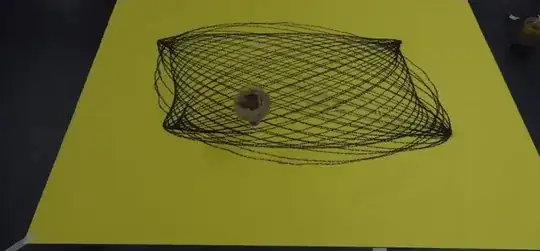They are closely related.
A rosette combines two motions. One motion is a simple circle. The other adds a radial oscillation to it. This comes from a sand pendulum suspended from a point. If you swing it in a circle, it draws a circle. If you bump it so it also swings in and out. It draws a rosette.
A spirograph does something very similar. It adds a circular motion on a circular motion. This answer to How does the Coriolis effect explain Ekman transport? happened to come up today. For a very simple elliptical rosette, it shows why circle on circle is equivalent to radial line on circle.
A Lissajous pattern combines two motions. One is a linear oscillation in the x direction. The other is a linear oscillation in the y direction. This requires the two string support shown in the video. If you swing the sand pendulum in the x direction. It draws a line back and forth. If you bump it in the y direction, it draws a Lissajous pattern.
Note that in both cases, the video shows the pendulum slowing down and drawing smaller and smaller patterns. To draw a true rosette or Lissajous, you would need to keep nudging the pendulum to overcome friction. The San Diego Museum of Natural History has a Foucault pendulum. See this and this

The sphere is about a foot in diameter. It is suspended from a point a few stories up. A simplified explanation is that it swings back and forth in a line, and the earth turns under it. That is how it would work at the north pole. It is a little more complicated at San Diego's latitude. The result is that a complete rosette comes every 44 hours or so instead of every 24 hours.
The disk in the floor has an electromagnet in it. It nudges the pendulum to keep it moving.


